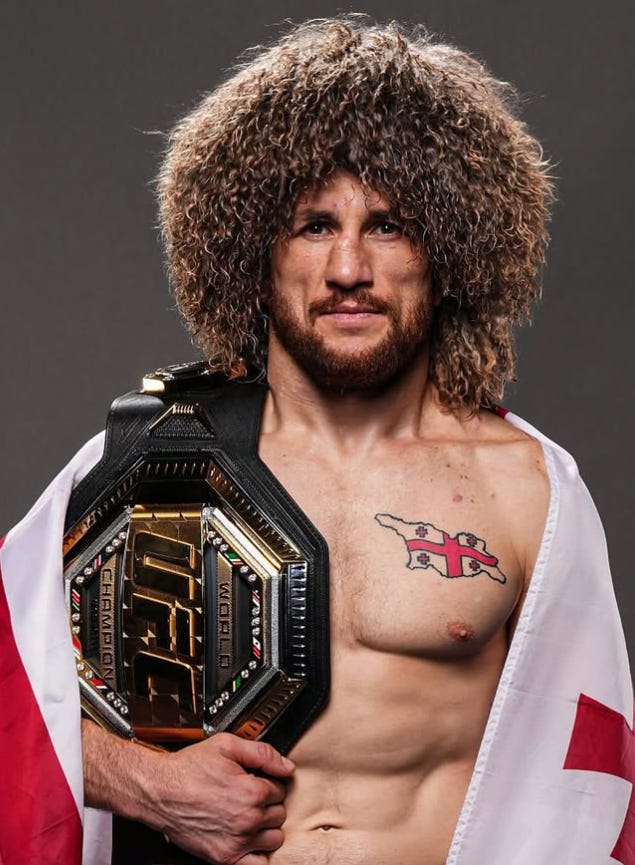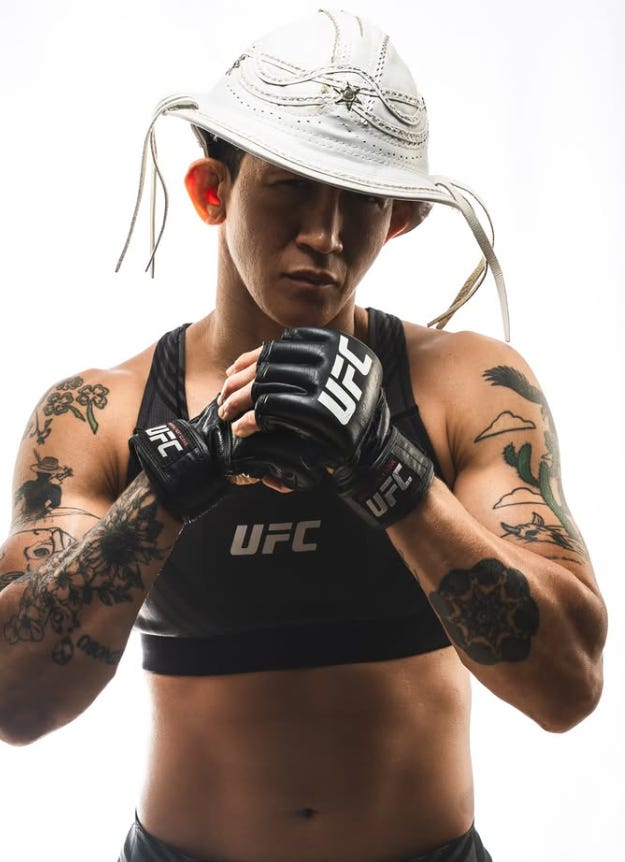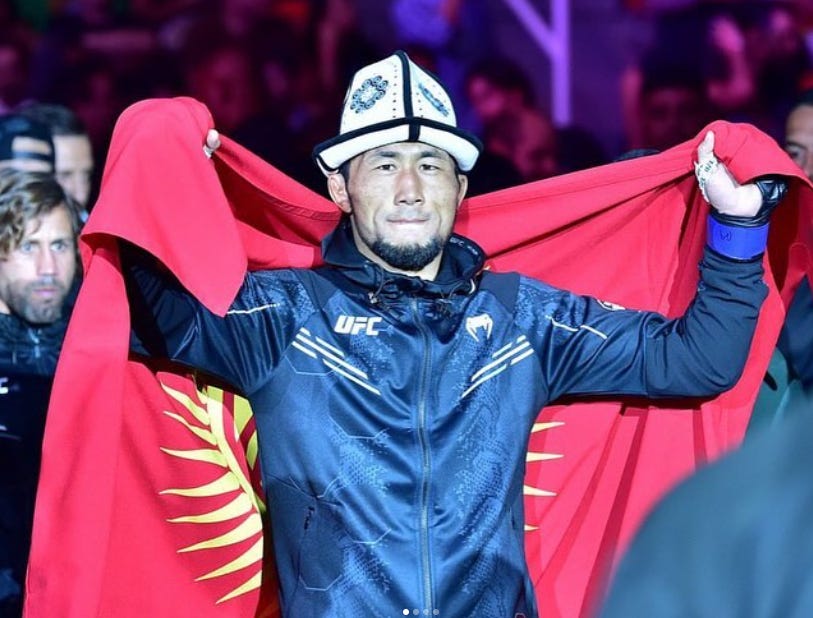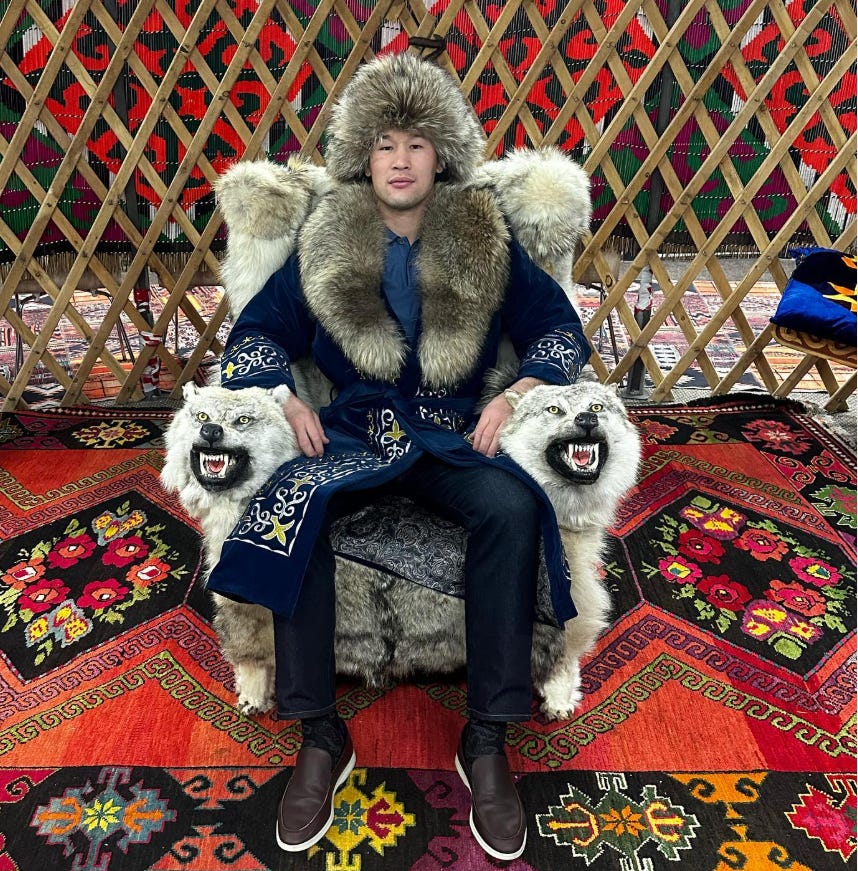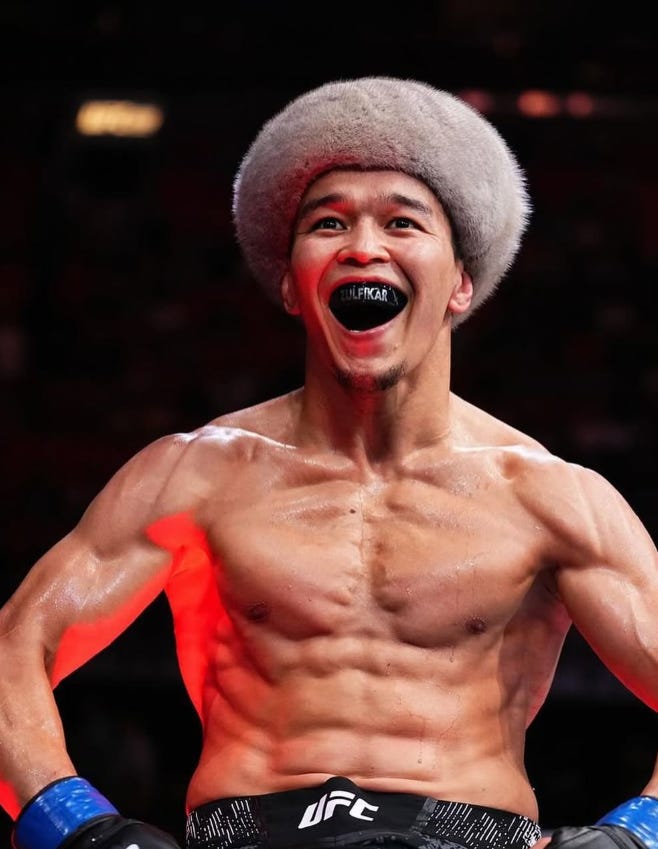Cool Cultural Hats
A Combat Sports Chapeau Compendium
In the beginning, fighters did not wear hats. These were stoic martial artists, who had no need for frivolities such as hats. They were definitely not barely restrained lunatics who completely believed that the ancient ninjutsu taught to them by a guy named Todd in a strip mall next to the old Applebee’s was the most lethal form of combat in existence. Finally, with the creation of mixed martial arts, they had an outlet to show everyone that Todd-Ryo-Do was capable of ending a man’s life with one punch.
The only time these neophyte fighters wore hats, there were thirty razor blades taped to the brim, turning it into yet another STREET LETHAL weapon in their hands. Which, incidentally, was number three on Big John McCarthy’s list of banned items for UFC 1, right after “all powders” and “mysterious black egg (full of powders)”.
Over the years, mixed martial arts went from a form of exercise for madmen, to something more closely resembling a sport. As the landscape changed, money became a motivating factor in attracting fighters. In addition to money paid directly to the fighters by the promotion, there was another avenue for cash flow: sponsors. Sponsors put patches and logos on the fighters' shorts, on banners held behind the fighters during introductions, temporarily tattooed across backs, and greatest of all, the glorious sponsored hats. However, these hats were basic in nature, simple ballcaps or beanies, fulfilling the utilitarian purpose of displaying the sponsoring company’s logo, which might then be stolen from the fighter during their walk to the cage by a daring fan. Or, in Tito Ortiz’s case, to be used as payment for coaches, sparring partners, and alimony.
With this cash influx into MMA, a much wider net could be cast in the constant search for new fighters. As a result, competitors from strange lands began appearing, bringing with them not only novel and unique fighting styles, but new cultures, practiced and appreciated by a brand new crop of screaming warriors. These are the cool cultural hats of these punching and kicking lunatics.
Papakha - Caucasus Mountains
Notable hat adherents (hat-herents): Khabib Nurmagomedov, Merab Dvalishvili
The preeminent cultural hat in combat sports, the papakha, known to some as “that big white afro clown wig,” burst onto the global MMA scene perched atop Khabib Nurmagomedov’s head for his UFC debut in 2012. Since then, the large, fluffy, sheep-based hat, originally crafted to keep folks warm while on the frigid Caucasus Mountains, has dominated the MMA landscape. No other piece of clothing, save the singlet, broadcasts to an opponent that an extended, gruesome wrestling experience will be had for the duration of the fight. And other than the quarter-zip, no other article of clothing has been more iconic for the Caucasian people.
Because the papakha is not confined to one country, but the entire imposing Caucasus region, it has been worn by more than just Dagestani fighters. Georgia’s Merab Dvalishvili typically sports a brown or black wool papakha, depending on the sheep used in the crafting. Regardless of the pigment of the sheep hairs, a papakha is enveloping and intimidating, much like the grappling style of its wearers inside the cage.
Chapeu de Cangaceiro - Bahia, Brazil
Notable hat-herents: Virna Jandiroba
This brimmed leather cowboy hat with tassels is worn by cowboys and ranchers from the backlands of Bahia, Brazil, though it has history specifically among a group of bandits from the late 19th and early 20th centuries. Virna Jandiroba sports this headwear to let her opponents know that a rootin tootin bout of rasslin, rustlin, ‘n’ tusslin is about to commence. Virna is always a tough out, and a solid leather cap is just the thing to protect a rancher out in the Bahia badlands. Yee haw, pardner, lemme lasso them thar capybaras and slug back some cachaca!
Ak-Kalpak - Kyrgyzstan
Notable hat-herent: Myktybek Orolbai
The Al-Kalpak is considered an immutable piece of Kyrg culture, and the symbolism of the component pieces of the hat are very elaborate. The main body of the hat is made of four separate panels, representing one of the four elements - earth, wind, fire, and water, all combining to a peak at the top, to evoke the snowcapped Kyrgyzstan mountains. Embroidery on the panels are for the family tree of the specific wearer of the hat, while tassels signify ancestors, and the lines on the edge of the hat represent life.
As for Orolbai, he is a balanced fighter, currently sporting six wins each by submission and TKO, similar to the elemental balance found on the Ak-Kalpak. He has two wins by decision, and his two losses are also by decision. What are judges if not the ancestors of the fight world, and what is a fight going to the judges if not honoring the fight ancestors?
Malahai - Kazakhstan
Notable hat-herent: Shavkat Rakhmanov
The Malahai is a cool cultural hat that really shows its provenance as being made of former living creatures. The hat is a leather cap with four flaps. The front flap is shorter and normally acts as a visor, while two on the sides cover the ears and can be tied under the chin. The back flap is long enough to protect the neck, and all flaps are typically trimmed in animal fur for added warmth. Additionally, before anyone comes to correct me, from the criminally minimal amount of “research” I did, the malahai or malakhai is the name of this type of hat with a high crown, while tymak is used for the style of hat with a low crown, and Shavkat more commonly wears a high-crowned malahai.
Shavkat Rakhmanov, the most notable wearer of the Malahai, embodies the all encompassing nature of the hat. Currently undefeated at 19-0, with 18 finishes, Shavkat is equally capable of knocking out an opponent as he is submitting them. As fearsome as the harsh Kazakh winters, Rakhmanov blends striking and grappling with ease, while his perfect record reflects the protection the malahai offers, as the leather can act as armor against bladed weapons. I’m covered in worms with how much I’m digging to find correlations at this point.
Borik - Kazakhstan
Notable hat-herent: Asu Alambayev
The borik is another piece of traditional Kazak headgear. It’s a simple head covering, trimmed in fur for added warmth. It doesn’t appear to have the same level of cultural or familial significance as the Al-Kalpak or the malahai. While not strictly utilitarian, the borik seems to slot into a more “everyday wear” type of role.
Asu Alambayev is predominantly a wrestler with a lot of wins by decision and submission, though only one of his wins in the UFC has come by stoppage. He’s not an unstoppable finishing machine like Shavkat Rakhmanov, and since he’s a Flyweight, he automatically gets a huge bonus to being completely overlooked. Much like the borik being a solid, dependable hat that might feature a small amount of embellishment, but won’t instantly point the wearer out as being a Real Big Deal, Asu Alambayev is a technically skilled fighter, competent across all areas of combat, but doesn’t seem to rise above the noise.



